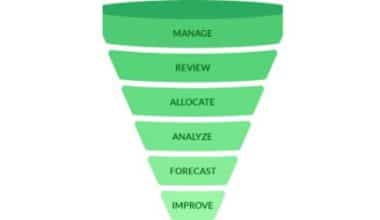The details of how much and to whom each employee was paid during a given pay period are recorded in a payroll register. It includes each worker’s essential wage data. Paycheck records, the total gross pay, perks and contributions, taxes and deductions, as well as the amount of each employee’s net salary are among these informational items. In this article, we explained everything about the payroll register. We also added some tips about Quickbooks payroll register. Why not dive in now?
What Is a Payroll Register?
A payroll register is a book that keeps track of who gets paid how much and when for a certain pay period. In most cases, a payroll register will include the following details about each employee:
- Gross pay
- Net pay
- Payroll taxes
- Withholdings for employees (such as health insurance)
- A sum for all employees throughout the time is also often included at the bottom of the register report.
- Paycheck histories, payroll details reports, and the like are not the same as the payroll register report.
The Structure of a Payroll Register
During a given pay period, payroll registers are often organized as a series of simple charts (one for each employee).
- Name
- Pay period dates (beginning and end)
- Pay date
- Hours worked
- Applicable pay rates (regular or overtime)
- Total gross wages
- Applicable employee and employer taxes
- Benefit deductions
- Employer benefit contributions
- Net wages
- Net payment details (paper check, direct deposit, or pay card)
It’s important to keep in mind that state and local rules on payroll records vary. To remain in compliance with federal, state, and local laws, businesses must be aware of the regulations that apply to their employees and keep relevant records for the required periods of time.
Steps to Create a Payroll Register
Make sure you have the following materials on hand before you begin creating a payroll register:
- Employer identification number (EIN)
- State and local tax IDs
- Federal Form W-4 and State Form W-4 (where applicable)
#1. Find Out How Often Payroll Is Processed
Make a decision as to how often employees will be paid: weekly, bimonthly, semimonthly, or monthly. Determine what works best with the rhythm of your business and stick with it.
#2. Collect All Relevant Personnel Data
You’ll need each worker’s time cards, pay stubs, and W-4s to calculate payroll and other taxes. New hires require not only a completed application but also a completed I-9 form.
#3. Fill Out the Registration with Employee Details and Pay Information
Input the time card data into the payroll system to determine the gross pay for each worker.
#4. Calculate Taxes and Deductions
To figure out how much money to set aside for each employee’s taxes, look at their W-4 forms. Contributions to pension plans and individual retirement accounts (IRAs) are also included in this category.
#5. Calculate Net Pay for Each Employee
Deduct the total amount of taxes and other mandatory deductions from an employee’s gross compensation. You will get each employee’s actual take-home pay or net pay.
#6. Examine and Balance the Payroll Ledger
Before starting a new payroll period, it’s important to resolve any outstanding problems or employee disputes from the previous one.
Payroll Register Templates
Payroll register templates, both online and in tools like Excel, are extremely basic. Books designed for keeping payroll records are also often available at office supply stores. Many organizations, both big and small, use digital payroll solutions because they are easy to set up and interface with other company applications.
How to Use and Maintain a Payroll Register
In order to manage unforeseen differences without confusion, it is critical for employers to keep relevant payroll data up-to-date and conveniently available. The payroll register should be updated simultaneously with the withholding of taxes and deductions from wages, the payment of employees, and the deposit of tax payments with government authorities. When followed religiously, such a practice can help guarantee reliable payroll records.
Conducting audits is a crucial component of keeping a payroll register up to date. During this time, businesses ensure that their accounting and recordkeeping procedures are up to code by reconciling payroll transactions. Payroll audits should be performed at least once per pay period.
Functions of a Payroll Register
Companies can benefit from keeping payroll records in at least the following ways:
- Log all paid time spent
- Examine your organization’s or individual employees’ spending.
- Maintain a record of tax and withholding payments made by employees
But the usefulness of a payroll register goes well beyond that. It’s also utilized by companies for the following:
- Payroll expenses must be reconciled with the general ledger.
- Keep a tally of how much time employees have taken off due to illness, vacation, or other paid leave.
- Verify the legitimacy of payroll deductions and employer contributions to a 401(k) or other form of deferred compensation.
All of these tasks can be done manually, but specialist payroll software makes reporting quick and easy with information available at the push of a mouse.
Payroll Registers: Payroll Expenses and Taxes
Payroll registers detail the various payroll-related costs that businesses need to budget for, such as:
- Wage deductions for the Federal Insurance Contribution Act (FICA)
- Employer-side FICA taxes
- Wage withholding for U.S. federal income tax
- Wage deductions for state and local income taxes (if any).
- Employer-side federal unemployment taxes
- Employer responsibility for state unemployment insurance taxes
- Wage withholding for state unemployment insurance (if required)
- Employer-paid workers’ compensation based on state law
- Wage deductions for benefits and other employee-approved expenses
- Benefits and retirement savings contributions made by employers
- Amounts owed for pay garnishment from employees
These payroll spending records can be invaluable in easing the pain of an audit. When it comes to filing payroll tax forms, a well-organized payroll record is invaluable.
- Quarterly Federal Tax Return for Employers (Form 941)
- Non-Employee Compensation, or Form 1099-NEC
- Wage and Tax Receipt Statement Form W-2
- Wage and Tax Statement Transmission Form W-3
Payroll Register vs. Paycheck History vs. Payroll Details
Each employee’s pay for a given pay period can be found in their paycheck history report. Due to the fact that each employee’s pay history is unique, it does not include information about other employees. Paycheck history reports can also serve as pay stubs for employees. You may be able to see a sum for many pay periods (e.g., all paychecks for the first quarter) if you utilize payroll software that allows you to combine paycheck histories for a specific time.
The payroll register file summarizes all salary and wage payments made to employees throughout a given pay period. The report provides individual employee totals as well as an overall staff total. At its conclusion, the register report often compiles data from separate reports detailing past pay periods.
The register report and the payroll details report are virtually identical. Paycheck information is displayed in both. Both can be used to display pay period details on a paycheck. Some payroll detail reports, however, allow you to further categorize the payments (for instance, by location). The employer’s share of payroll taxes is often included in the payroll details report, but not the payroll register report.
Tips for maintaining a payroll register
Pay close attention to the following in order to maintain a compliant and up-to-date payroll register:
#1. Maintain Precise Records
Payroll register inconsistencies can be avoided through regular record-checking and the correction of any discrepancies found. The following are examples of frequent mistakes that occur with payroll:
- Paying employees unfairly low or high wages
- incorrectly deducing many factors
- Not providing the first salary to an employee
#2. Regularly Review and Update Employee Information
Make sure your payroll register reflects any new hires. If an employee requests additional deductions, such as for insurance, be sure to account for them in the payroll ledger.
#3. Maintain an Awareness of Evolving Tax Regulations
If you want to avoid fines, you should update your payroll system immediately if there is a change in federal, state, or local tax legislation.
#4. Employees Should Be Trained on the Payroll System
Workers will be more understanding if there are delays in processing payroll or if there are minor problems in their payments if they understand how your payroll process works. Your employees will be more cooperative in providing the accounting team with the tax data they need and communicating any changes to their financial commitments that may impact payroll processing.
What is QuickBooks Payroll Register?
The accounting department can save time and effort with the use of QuickBooks Payroll Register, a service application used to conduct payroll. Payroll processing also includes determining employee compensation and deducting any federal and state taxes. By “payroll,” we mean a company’s system for tracking and disseminating financial information pertaining to its personnel.
Types of QuickBooks Payroll Register
There are two versions of QuickBooks Online Payroll Register:
#1. Standard Payroll
It’s a payroll program developed specifically for companies with 30 to 50 workers. Neither benefits nor human resources are unified. This might not be a big deal if your company only has a handful of workers.
#2. Advanced Payroll
For people whose work involves “payroll” on behalf of many clients, this program was developed. This includes professional accountants, payroll experts within organizations, and others in a similar position.
How Does QuickBooks Payroll Register Work
The first step is to pick a payroll option in the QuickBooks Desktop Application. Then, you’ll need precise data about your business and its staff, such as up-to-date names, ages, and phone numbers. You’ll need a copy of the employee’s pay stub to make the change from Standard to Advanced payroll, or vice versa. In addition, you’ll need your new hires’ tax and NI(National Insurance) information.
Features of QuickBooks Payroll Register
Here are some of QuickBooks Payroll’s features:
#1. Direct Deposit For Employees
No matter which service plan you choose (Core, Premium, or Elite Payrolls), you’ll have access to free direct deposit. Employers will have an easier time paying workers who are already logged into the system.
#2. Payroll Runs are Unlimited
Payroll processing with QuickBooks Online is unlimited. There are no additional fees associated with running payroll via QuickBooks Online Payroll.
#3. Calculation and Filing of Taxes automatically
Finding and filing tax paperwork and making tax deposits are made easier with QuickBooks Online Payroll.
#4. Payroll Automation
Employees may process payroll using this tool without having to manually enter any data. This must be done before payroll is processed. The ability to include salaries and bonuses in payroll is another useful function.
#5. The Workforce of QuickBooks
Employees may access their most up-to-date tax data, annual earnings, paid time off, pay stubs, W-2 forms, and more through QuickBooks Payroll.
Benefits of Having a Payroll Register
Keeping everything linked to payroll in one place—wages, taxes, and distribution—is much easier with the help of a payroll register.
#1. Makes It Possible to Preserve Detailed Records
It’s easy for accounting mistakes to be made with all the tasks that need to be completed before the end of the pay period, especially if you have a large workforce. Accounting staff can use a payroll register to catch and correct simple mistakes in the books that could otherwise go undetected.
#2. Promotes the Legal Observance of Tax Regulations
Payroll records must be kept for at least three years for review and reference purposes by the Internal Revenue Service (IRS), the Fair Labor Standards Act (FLSA), and the Equal Employment Opportunity Commission (EEOC). Maintaining the employment records required by law is a breeze with the help of a payroll register. You’ll never be more than a couple of mouse clicks away from any of this data.
#3. Helps Save Time
Payroll processing takes too much time and has too much room for error when done manually. Manual payroll registers require a lot of training and supervision to be used accurately for anything like calculating tax withdrawals or overtime payments each period. But a payroll system that runs itself will spare you the hassle and save you time. A human must enter new employee details or termination dates, but the rest of the work is done automatically. Additionally, a payroll register exposes your company’s quarterly or annual spending trend, allowing you to quickly and easily prepare for peak and slow seasons.
#4. Helps with Proper Employee Remuneration with Precise Payroll Data
Maintaining a current payroll record makes it simple to reconcile payroll and ensure that all taxes and wages were calculated correctly. Keeping track of this data will end up saving you a lot of time and effort. There will be no need for any regulatory bodies concerned with taxes to conduct an audit of your finances in search of compensation mistakes. It helps workers appreciate regular, timely paychecks. Keeping a payroll register is a basic yet efficient way to boost morale and encourage workers.
Is a Payroll Register a Worksheet?
Spreadsheets can be used to build payroll registers, although this option may not be suitable for many businesses. Payroll software makes it simpler to maintain reliable payroll data and rapidly generate reports.
What Is the Journal for Payroll?
Records of every payroll transaction are kept in payroll journals. General ledger entries at the summary level also represent this data. Payroll journals are used in place of the general ledger when more granular payroll information is required, such as during an audit.
Is the Payroll Journal the Same as the Payroll Register?
Payroll journals and payroll registers are similar in that they both record financial transactions related to employees, but they are not identical. In comparison to payroll journals, payroll registers often feature more granular information about each employee’s pay and benefits. Access to the payroll register is frequently restricted to individuals who are permitted within a firm, like a payroll manager, due to the volume of sensitive information it contains.
Who Prepares the Payroll Register?
The register might be made by you, the bookkeeper, or the HR department, depending on how big your company is. It’s a must-have for any business owner, as it helps you keep track of one of your biggest outlays: salaries and wages.
What Is a Payroll Sheet?
A Salary Sheet, also known as a Payroll Sheet or just a Payroll Sheet, is a comprehensive accounting of all compensation due to workers for services rendered within a given time period. It’s possible to read it like a pay stub as well.
What Is the Difference Between Salary and Payroll?
An employee’s salary is the annual amount they are guaranteed to receive from their employer, while payroll and payroll infrastructure are the systems used to keep track of employee earnings and deductions.
How Do You Do Payroll Accounting?
- Summarize Wages Due.
- Enter Employee Changes.
- Calculate Taxes.
- Calculate Wage Deductions.
- Deduct Manual Payments.
- Create a Payroll Register.
- Print Paychecks.
- Pay by Direct Deposit.
Final Thoughts
A payroll register is a useful tool for keeping track of payroll-related transactions. All of your monetary commitments for the term are broken down in great detail. You can pay your employees on time and provide the information required by the IRS and SSA to comply with payroll tax regulations in a timely manner if you use payroll software. You can’t properly manage your company or pay your employees or comply with federal rules without the information contained in a payroll register. It’s a useful tool to have as part of your regular payroll process because it allows you to review your work and make sure everything is accurate. Think about investing in payroll software that makes generating a payroll register report a breeze.
Related Articles
- QuickBook: How To Use QuickBook Application (+Free Tips)
- What Are The Best Accounting Software in 2023
- PAYROLL SYSTEM: Definition, Software & Guide
- PAYROLL MANAGEMENT: Software and Best Practices
- Small Business Payroll: Best Payroll Software UK Service






